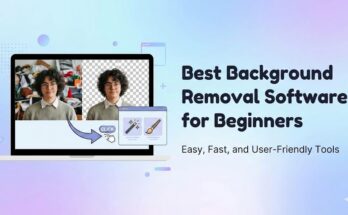If you’re working in preconstruction, you already know this — civil takeoffs are never quick. Whether it’s sitework, storm drainage, or grading, getting accurate quantities takes time. Lots of it. That’s why finding the right civil takeoff software can make a huge difference in how fast and confidently you bid.
But with so many tools out there, how do you choose one that actually helps, instead of adding more clicks and confusion?
Here’s a breakdown of what really matters when picking software that’ll make your takeoffs faster, cleaner, and easier to scale.
1. Focus on Workload First, Not Features
Before looking at tools, look at what you actually need help with.
Civil takeoffs usually involve:
- Grading and excavation
- Paving and site concrete
- Stormwater and underground utilities
- Landscaping quantities
- Slopes, profiles, and detailed civil sheets
If your current process involves tracing each pipe and counting inlets by hand, then time is your biggest issue. Good takeoff software should help eliminate those repetitive steps, not just make them slightly faster.
Start by asking: What’s taking up 70% of my time? Then find a tool that targets exactly that.
2. Look for Real Automation, Not Just Digital Tools
Some tools just turn your mouse into a digital highlighter. That might feel better than a ruler, but it’s not automation.
Real civil takeoff software should:
- Read your plans directly (no manual clicking)
- Detect material quantities by scope — excavation, paving, etc.
- Let you define what you want (like all 12″ storm lines or specific structure types)
- Deliver an Excel-ready breakdown you can use immediately
Tools like Beam AI do this by letting you upload civil PDFs, define your scope (say, stormwater or sitework), and get back a QA-reviewed takeoff file — usually in 24 to 72 hours.
The goal isn’t just to speed things up. It’s to remove the grunt work entirely, so your team can focus on strategy, pricing, and coordination.
3. Consider Time Saved Across the Entire Bid Cycle
Manual takeoffs don’t just take time. They push everything else back. If you’re spending three days tracing drawings, that’s three days you don’t have for pricing, vendor coordination, or reviewing risks.
Look for software that helps you:
- Cut takeoff time by 70–90%
- Get early access to quantities for quick ballparks
- Stay ahead of addenda and scope changes
- Free up time for things like vendor follow-ups and site walks
When you consistently save 15–20 hours a week, your team can handle more bids, spend more time on the ones that matter, and stop skipping the details that actually win work.
4. Choose Software That Handles Civil Complexity
Civil plans are tricky. There’s no room for tools that only work on architectural drawings or simple layouts.
Make sure your software:
- Understands slope symbols, profiles, and linework
- Supports both surface plans and underground utilities
- Recognizes multiple materials, diameters, and structures
- Handles quantities for excavation, paving, asphalt, and landscaping
This is especially important if you’re working on large site packages or infrastructure jobs. If the tool can’t read your drawings properly, it’s just another headache.
5. Bonus: Can It Support Other Trades Too?
While you’re focused on civil takeoffs now, it’s worth considering a tool that can scale with you.
If you ever need to estimate:
- Concrete takeoffs for pads, curbs, or flatwork
- Painting takeoff software for exterior finishes or retaining walls
- Or trades like mechanical, electrical, or interiors
…you’ll save yourself a future switch if the same platform handles multiple scopes. Some tools (like Beam AI) already support 15+ trades, so you’re not boxed in later.
Final Thought
Choosing the right civil takeoff software isn’t about picking the one with the flashiest interface or longest spec sheet. It’s about picking something that helps your team work smarter, not harder.
That means:
- Less time tracing drawings
- Fewer errors and missed quantities
- More time to refine bids and coordinate with suppliers
- A shot at doubling your bid output without doubling your team
If you’re evaluating tools, start with a simple question: Will this help me move faster without sacrificing accuracy?
If the answer is yes, you’re headed in the right direction.




